Mercury, the planet closest to the Sun, exhibits a fascinating Sodium tail that can be captured using a specialized 589nm filter available from In Sky Books. This unique feature can be photographed using DSLR cameras, and by popular models from ZWO or QHY with a telephoto lens or a small telescope.
The emergence of Mercury’s tail is a complex interplay of factors, where sodium atoms take center stage. Liberated from the planet’s surface by the combined forces of sunlight and micrometeorite impacts, these sodium atoms embark on a journey into Mercury’s atmosphere and beyond into space, thousands of miles long sculpting the unique and unmistakable form of the planet’s tail. The Sodium tail can extend for 10 degrees or more as seen in images made here on earth and captured with realitvely modest equipment!
While Mercury’s tail comprises various elements, sodium takes precedence due to its effective scattering of yellow light. This property enables the tail to be captured from earth based observers in in a series of short 30 secound stacked photographs.
Utilizing filters within the Sodium light 589 nm range, astronomers can gain insights into a broader array of celestial phenomena beyond just Mercury’s tail. Sodium filters prove effective when studying the sun and comets. Observations have revealed sodium emissions not only from our moon but also enveloping Jupiter in a haze, originating from its moon Io. The detection of sodium in distant star systems provides valuable information about rocky exoplanets. Additionally, astronomers can employ sodium absorption bands to measure redshifts and ascertain the size of the universe.
Mercury Trail Visibility and other factors
The visibility of the planet’s sodium tail becomes clearer when considering specific factors. Mercury completes an orbit around the Sun every 88 days, and during this period, it alternates between closer and more distant approaches to the Sun. While most planets follow nearly circular paths during their solar orbits, Mercury’s orbit is notably elliptical.
At its farthest point from the Sun, known as Aphelion, Mercury is at a distance of 0.467 Astronomical Units, whereas at its closest point, known as Perihelion, it is at 0.307 Astronomical Units. This significant difference of 65% in distance results in a more than 1.8 times variation in solar energy between Mercury’s closest and farthest points.
It’s evident that the energy required to propel sodium particles from the planet’s surface is greater during Perihelion. The sodium trail is most visible and robust approximately 16 days before and after Perihelion. Therefore clear transparent skies are a must on your attempts. Given that Mercury’s orbit takes 88 days, Perihelion and Aphelion events occur about four times a year.
Of course, the planet’s visibility during certain Perihelion events is affected by its location at Superior conjunction (when Mercury is behind the sun and out of sight) and Inferior conjunction (when Mercury is directly in line between the Earth and the sun), making it temporarily invisible during these specific times.
Our special Sodium Band filter is meticulously crafted with a central wavelength precisely set at 589nm and a narrow 10 Full Width at Half Maximum (FWHM) bandwidth . This design adheres to high standards and rigorous quality, specifically tailored for optimal imaging of the planet Mercury and its distinctive Sodium tail.
This is a full aperture filter for the application, not a sub-diameter filter that was modified with step up rings or other methods to achieve fit in a 1.25 inch housing. Our Mercury Sodium filter has been precision-engineered to exceed imaging expectations and manufactured to guarantee satisfaction.
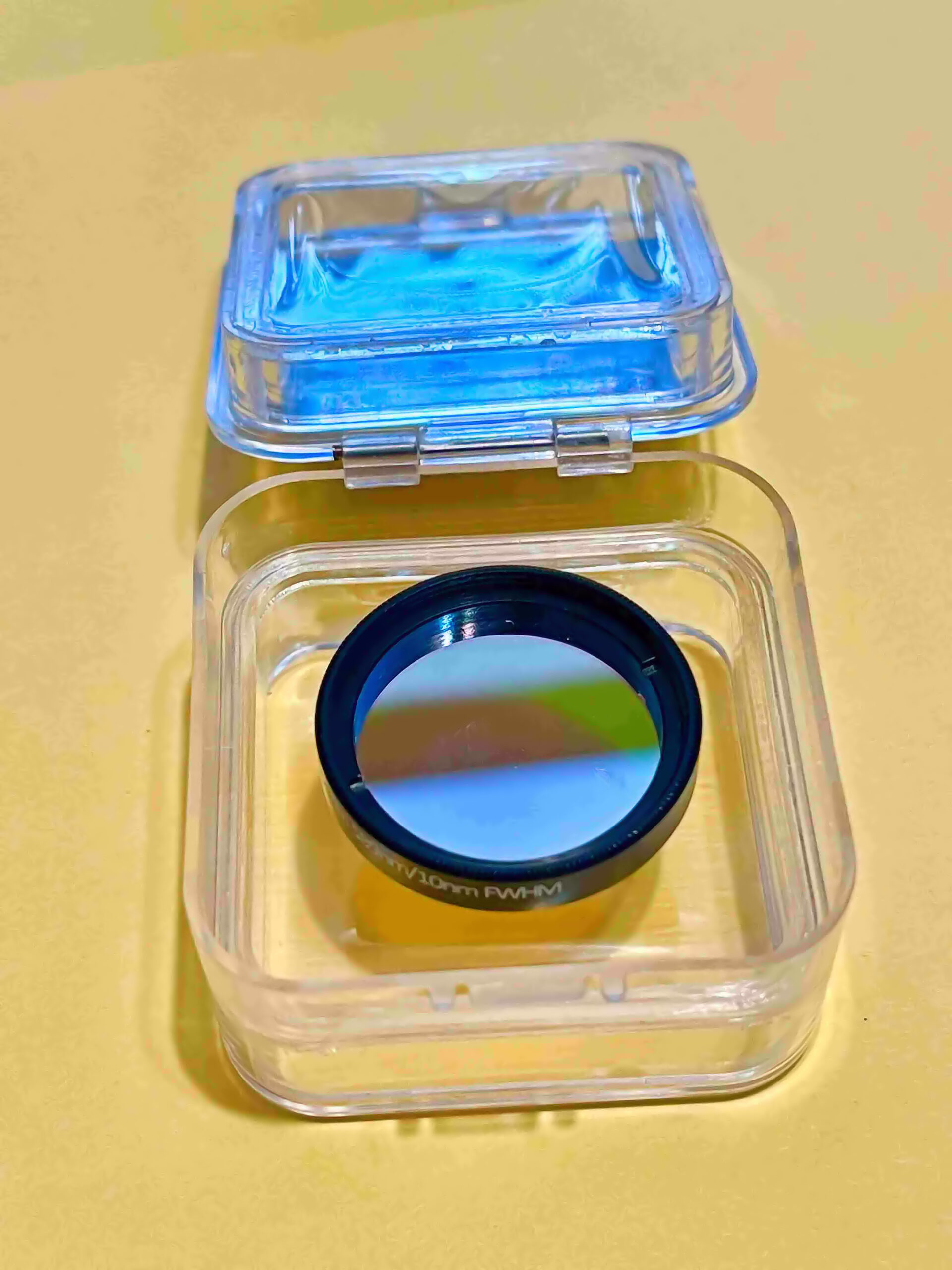
Filter Specifications:
- 589nm CWL which is the wavelength of Sodium (NA) light.
- Full Width-Half Max FWHM Tolerance (nm) ±2.0
-
brand exclusive quality glass is used.
- Each filter guaranteed to transmit 95 % of light or greater at specified the 589nm Sodium light wavelength.
- No visible light leaks, from 200nm through IR range of above at least 1200nm, with O.D.exceeds 4 or greater in blockage.
- Hard coated for maxium life and transmission.
- Thin glass design 2-3 mm thickness – reduces refraction effects and and annoying “ghost” images, also increases maxium transmission.
- Our filters are assessed and analyzed on an individual basis guaranteeing the best performance and are custom produced to top quality.
Each filter is mounted in an engraved 1.25 inch quality filter housing and is threaded to accept additional astronomical filters for experimentation stacking purposes.
When you order our filters, they are meticulously packaged in a special membrane-clear acrylic case. This expensive protective casing serves as a barrier against dust and moisture, providing a visually striking effect that gives the appearance of the filter almost “hovering” in place. Renowned within the optical industry, this case is widely utilized for its efficacy in shock prevention, ensuring the safety of the enclosed, valuable optical components. We prioritize the secure delivery of our filters, maintaining their quality from our facility to your hands.
Guarantee and Independent test results
At In Sky Books, we stand behind the assurance that our filters deliver on the published wavelengths and provide the performance and quality standards we promote. Each filter is designed and manufactured to provide a smooth, straight-line format, as depicted, with a sharp ascent precisely centered on the 589 nanometers for the Sodium line.
The credibility of our In Sky Mercury Sodium Filter is underscored by the indepenent testing conducted by Jim Thompson, who has extensively evaluated numerous popular astronomical filters. According to Jim, our filter is well-crafted and has successfully surpassed his accuracy tests, boasting a Full Width at Half Maximum (FWHM) performance of less than 10 nanometers, exceeding some industry standards.
We are committed to providing filters that not only meet but exceed the expectations of our customers.
Save hunderds of dollars over our competitors.
Comparatively, a compatible filter from Edmund Scientific Co. is priced at $169.00, with a diameter of only 12.5mm. To work best this small filter would need remounted in a larger standard 1.25 inch housing or suitable adapter. Unfortunately, this would cause considerable vignetting with a reduction of over 50% in the aperture, leading to diminished contrast and resolution.
Edmund also offers a 25.4mm filter for $247.00, which still requires modification to fit into a 1.25-inch housing and at well over two times the cost of our Mercury Sodium Filter. It’s important to note that Edmund claims a transmission rate of only greater than 85% for their brand, while our product surpasses this with a transmission rate exceeding 95%. Our filter not only offers a cost-effective alternative but also outperforms in terms of both size and transmission efficiency.
The In Sky Books design allows for the direct mounting of our Mercury Sodium 589nm filter onto your ZWO ASI, QHY, or similar Astronomical CMOS camera by simply screwing it into the camera’s nosepiece. This streamlined process facilitates a quick setup – insert the camera/filter combination into a small telescope, and you’re ready to capture stunning images.
For optimal results, point your instrument on the planet Mercury during favorable conditions and capture a series of short 20 -30-second exposures over a 5-minute period. For your last image remove the filter and take an additional backdrop image to compete the series. Stack all the images as you would with any other planetary image, and when orchestrated properly, you’ll be treated to truly remarkable results. This user-friendly approach enhances your imaging experience with ease and efficiency.
In conclusion our latest line of sodium filters excels in both cost-effectiveness and performance, providing top-tier quality for astronomical imaging.
Don’t miss out, act now to take advantage of our limited-time offer on our exceptional sodium filters – buy one today!

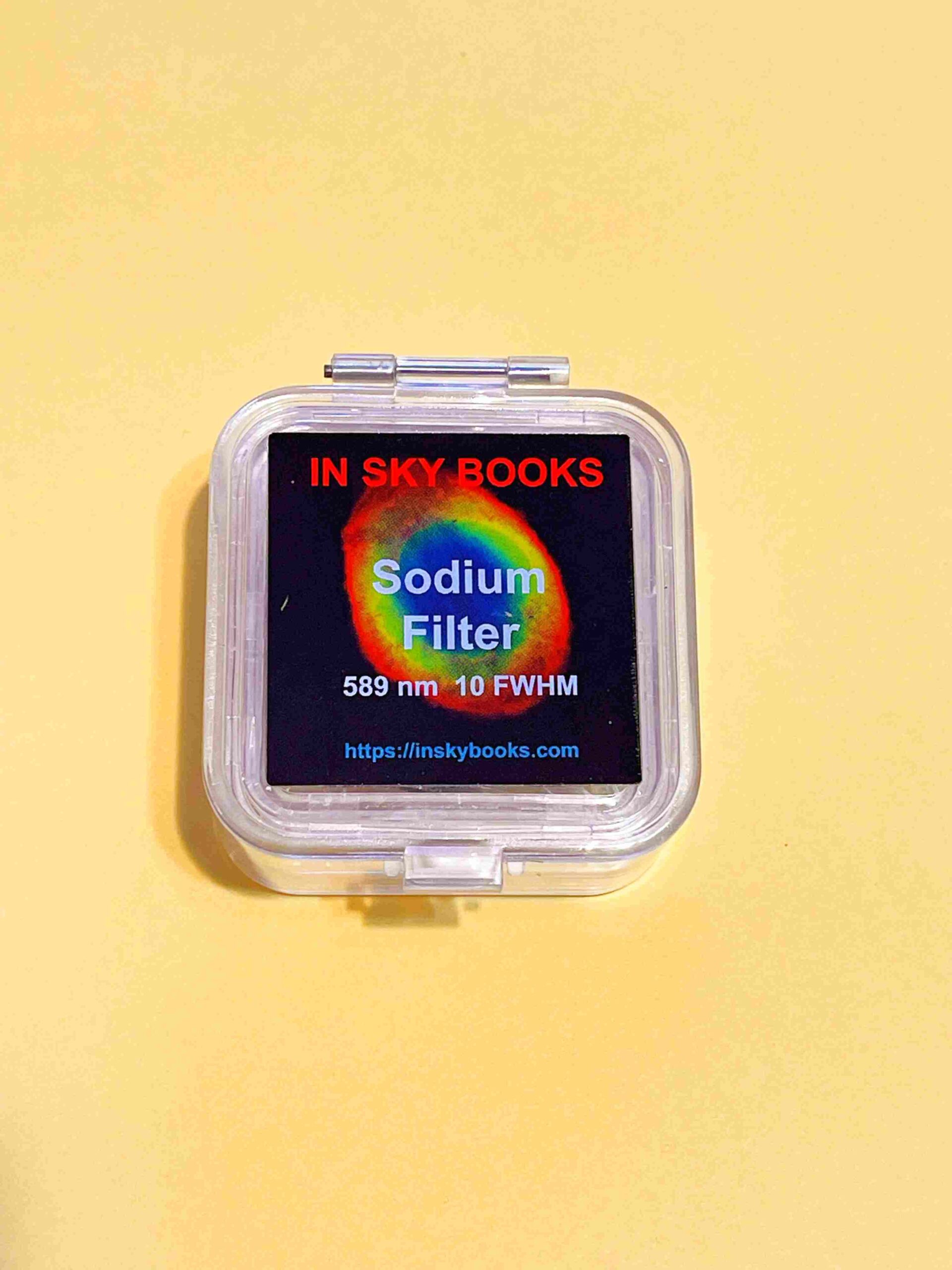
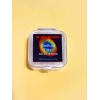

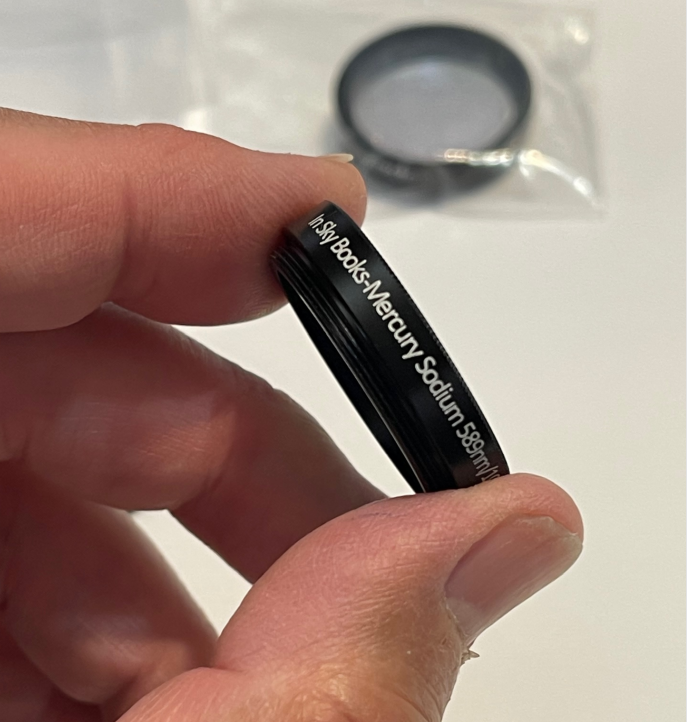
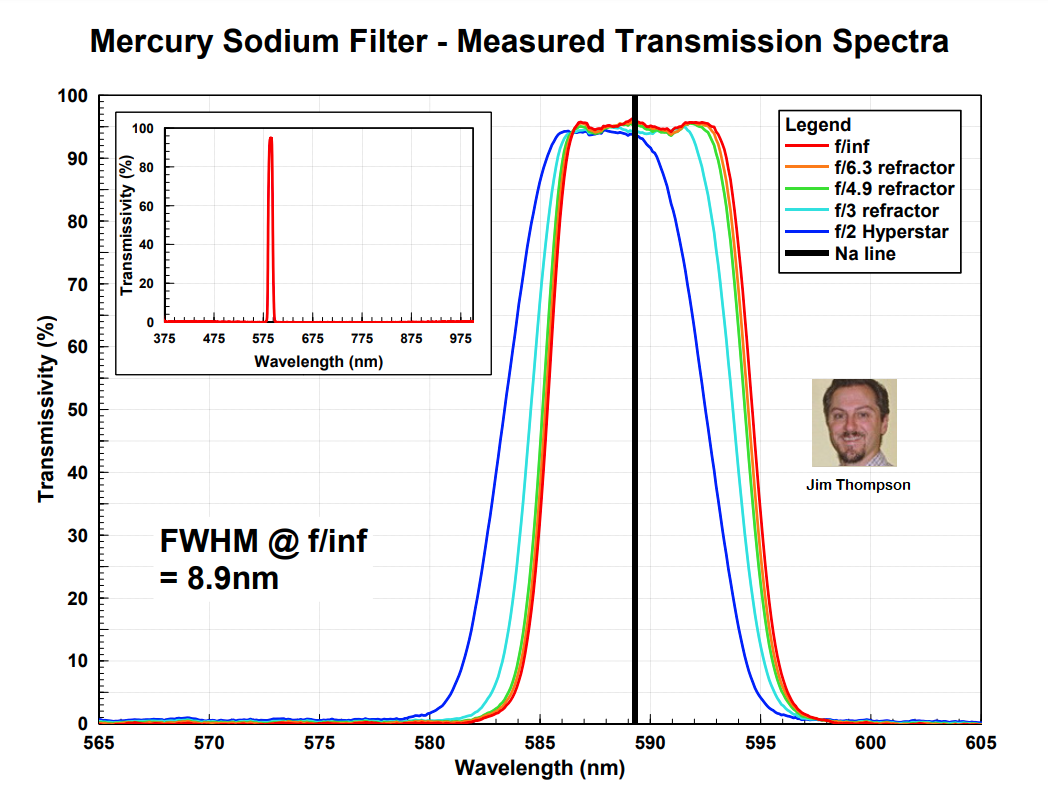
Reviews
There are no reviews yet.